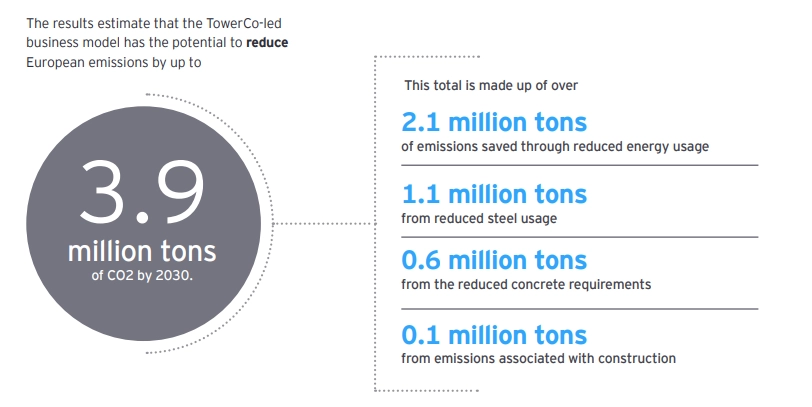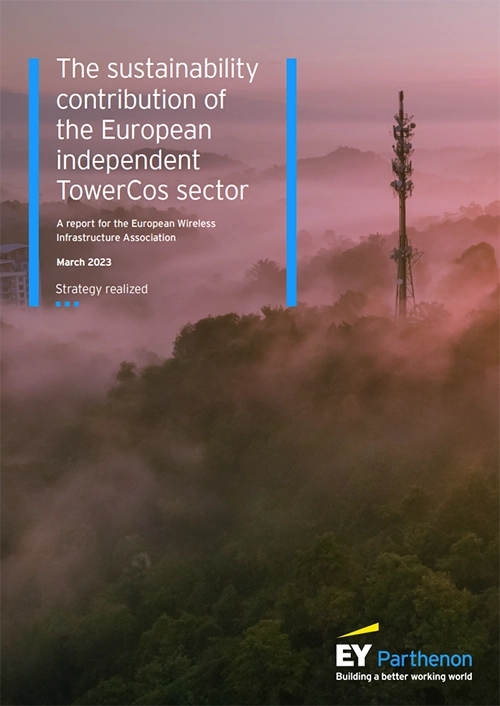Trends
Trends
MAR
27
2023
Environment
TowerCos will save 4 million tonnes of CO2 emissions in the roll-out required by the EU by 2030
The telecommunications sector will play a crucial role in the green transition sought by a Europe that is aiming for a “more ecological, digital and resilient” model.
Thanks to the rise of 5G and the Internet of Things (IoT), consumers, companies and public administrations have the chance to apply new technologies that foster more sustainable business models to meet the goal of achieving a carbon-neutral economy by 2050.
However, the constant growth in the use of mobile data that is forecast over the next decade and the unequivocal commitment of the EU authorities to promoting the roll-out of 5G networks outside urban centres, plus increased coverage in high-density areas, will mean doubling the number of telecommunications infrastructures.
Building such infrastructures inevitably involves an environmental cost because they use steel and concrete, two materials that are intensive in carbon emissions. It is this context that justifies the rationale of independent towercos (tower operators). According to their definition as service providers shared among all operators, the role of these companies will be fundamental in ensuring an efficient and rational increase of the network that is required to meet the growth in demand.
Ernst & Young calculates that the overlaps that this business model avoids will prevent nearly 4 million tonnes of CO2 from being emitted in the development required by 2030. That saving is equivalent to removing 200,000 vehicles a year from the roads, or 0.3 percent of the overall reduction target for the whole of the EU.
“Thanks to their inherent role in infrastructure sharing, independent towercos are the most efficient way to roll out the infrastructure network that is needed to meet the demand for data consumption forecast for 2030″, explains E&Y in the report entitled “The sustainability contribution of the European independent towerco sector”, commissioned by the European Association of Telecommunications Infrastructures (EWIA).
The report underlines that a roll-out scenario led by independent towercos with a 50 percent market share by 2030 would remove the need to build more than 100,000 towers in Europe and the subsequent use of 9 million tonnes of concrete and 650,000 tonnes of steel.
This reduced level of construction and use of materials to provide the same service – with a reduction in energy consumption that will avoid emitting 2.1 million tonnes of carbon dioxide – will also reduce visual pollution.
Within this context of optimising resources, the report also highlights the technological and process commitments that the sector has put in place to reduce its carbon footprint and to lower maintenance requirements.
“Independent towercos are leading industry efforts to bring in new carbon footprint-reducing processes and technologies. From the use of renewable energy sources in off-grid towers to the deployment of technologies to control and reduce maintenance needs, towercos are showing that Europe can be connected in a sustainable and carbon-efficient way.”
The study, which analyses a number of cases to illustrate its conclusions, including that of Cellnex, underscores the importance Europe’s leading infrastructure manager attaches to ESG (Environmental, Social and Governance) principles and compliance metrics and how it has embraced them. It also values the implementation of innovative solutions and programmes to improve the environmental efficiency of processes that will give the industry a brighter future.
In particular, it welcomes the self-generation of solar energy solutions implemented at almost 700 sites and the successful completion of a pilot programme to test and validate the use of aluminium-air batteries as a reserve of renewable energy for its towers.
You can read the full report here:


















